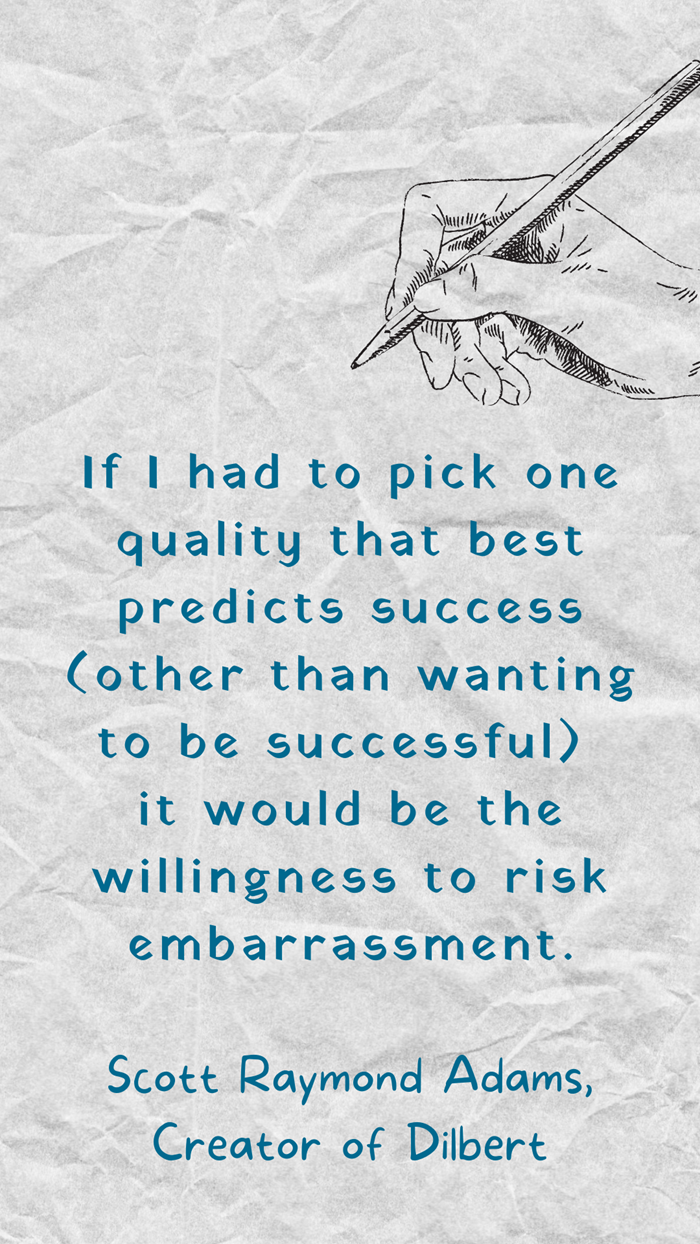 We all have embarrassing moments. In our business lives, as well as our personal lives.
We all have embarrassing moments. In our business lives, as well as our personal lives.
- You feel a red tint creeping up the back of your neck.
- Before you know it, you’re in a full-on blush.
- Embarrassing moment for all the world to see.
Don’t you hate that?
Channel embarrassing moments and cherish them.
You read that right – cherish them. The experience will make you a better business communicator.
How? Well, let’s find out by exploring common red-faced instances.
Embarrassing Moment #1 – Looking bad in front of the boss
Looking bad in front of the boss is a good reason to be your own boss. You’re more likely to have a forgiving boss. 😊
How can you embarrass yourself in front of the boss? Ah, let us count the ways.
- Not knowing something you should – or at least your boss thinks you should
- Adding incorrect data/information – the one that happens in the report your boss is presenting
- Slamming your boss to others – which somehow always gets back to the boss, or you get caught doing
So, how the heck do you produce better business communication from those miscues?
1. Help your client shine in front of the boss.
Tap into those feelings you had when your efforts fell short. Think about what you can do to help your client contact avoid the same experience.
By regularly helping someone look smart in front of the boss, you solidify your business relationship. They will think about you first the next time they have a suitable project.
For example, in my corporate and freelancing career, I often worked with middle management. I would share items that would show off their knowledge and talent.
The following are a few simple ways to do that.
- Spell out acronyms the first time used. Sure, you’re all in the same industry, which is why your reader could be embarrassed if they don’t know the meaning of the acronym.
- Share helpful information that enhances your connection’s credibility and proficiency at their job (trends, industry reports/articles, management tools).
- Save the business money by offering suggestions for increasing productivity, sales, or return on investments. What boss doesn’t like that?
Bonus Tip: If your connections take credit for the information, let them. Your connections will not forget you. And, if they do, move on.
2. Know your weakness and get help BEFORE embarrassing yourself.
Conjure up an image of your boss presenting YOUR wrong data to a customer. *Shudder*
It’s happened to me. In my corporate days, I worked with numbers a lot – the dollars variety. Getting money calculations wrong is beyond embarrassing.
- Math and I have always had a challenging relationship.
- I can do the calculations, but it doesn’t come naturally. I have to work at it.
- Not like my coworker who could spot a spreadsheet calculation error from 50 feet away.
So, my coworker and I joined forces. She struggled with the written aspect of reports, which I loved. I had her check my calculations and I would edit her text. Match made in heaven.
If you are a business of one, you may not have access to that heavenly match. Fortunately, technology offers many great tools.
- Spell checks, grammar, and writing tools
- Industry-specific calculation tools
If research is a big part of what you do, make sure you validate resources and results. If you can’t find the source, don’t use it.
No tool or individual is foolproof. But don’t be the fool by failing to check and re-check your work.
3. Stop feeling overly secure.
Social media charms you into a false sense of security. You get ticked off and blast an individual in your latest tweet or wall post. You sent it to just friends, right?
Think about it. How often have you said, “What a small world.”
Well, that small world is waiting for the opportunity to share your rant. With your boss, your client, or coworker.
Always stay professional. Strangle the Shoulder Satan who lures you into posting or sharing less than professional musings.
So, feel insecure about what others may say. This is one time it works to your advantage.
Moment #2 – Finding out – very publicly – you’re wrong.
We’re all wrong about something. How we find out, can be quite embarrassing.
Convert that embarrassing moment into another opportunity for better business communication.
Beware of knee-jerk reactions that lead to ranting or snap judgments.

Before you act:
- Know the facts.
- Separate opinion from fact.
- Accept other points of view.
But if you post, and find out you’re wrong:
- Admit you’re wrong.
- Be humble.
- Move on.
People will respect your response.
Moment #3 – Making a bad first impression
First impressions are laden with booby traps.
- You walk up to meet someone and trip before you get there.
- You call a person you just met by the wrong name.
- You share a derogatory remark about a person and find out that person is his mother.
Oops.
How can you possibly create better business communication from a bad first impression?
- Borrow from #2 – admit your error and move on.
- Make a joke at YOUR expense.
- Use the moment as an incentive for following up with your best communication. Then repeat, repeat, repeat.
Give others a reason to change a negative first impression.
Rather Be Read Than Red
Embarrassment happens to all of us. It’s what we do with the moment that is truly telling.

How have you turned an embarrassing business moment into success?
==================================
Note: This post originally published on August 8, 2013. This October 24, 2022 version updates it.
===================================

And… IMMEDIATELY own up to the gaffe. You will gain the respect that you think you lost by that error.
The other day, I told someone that I think XYZ laid off 500 or 5000 employees- I did not know which. It turns out that the number was closer to the former (the company admitted 400) and I felt bad for leading him astray. I immediately wrote and corrected the number. He thanked me for the information.
Good point, Roy. People are much more likely to allow for human error if we act human by admitting we are not perfect. 😉
Thanks for sharing your story.